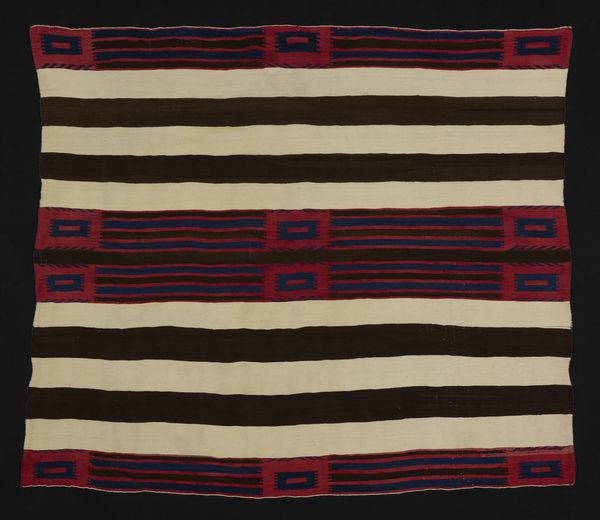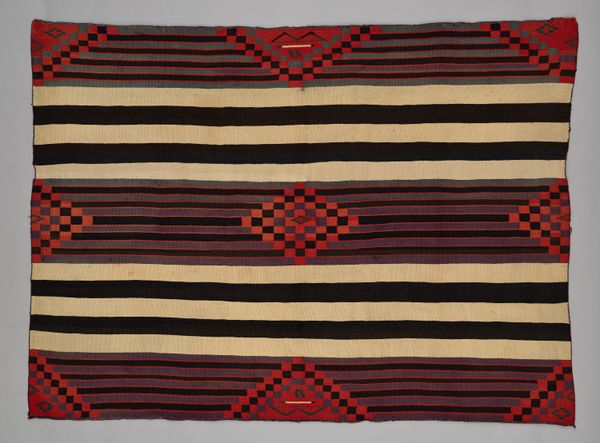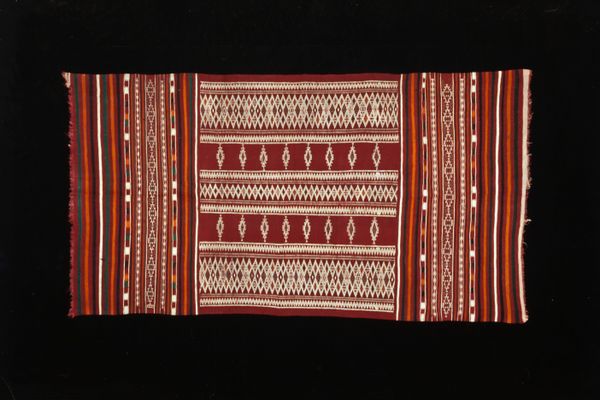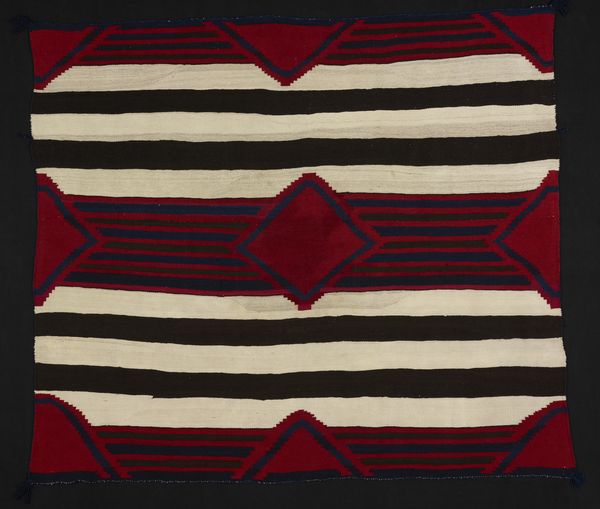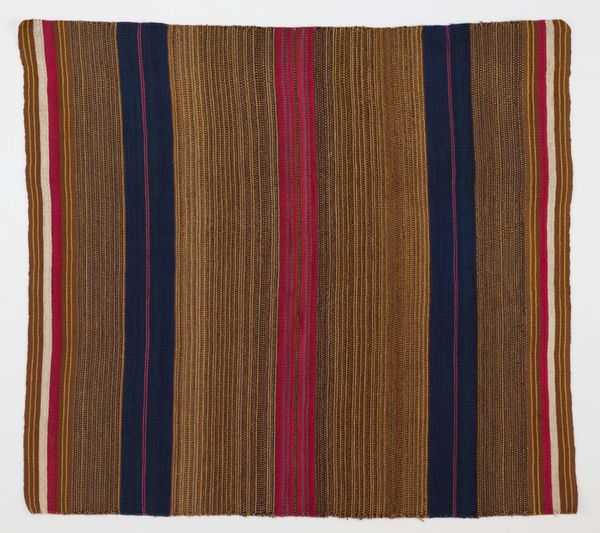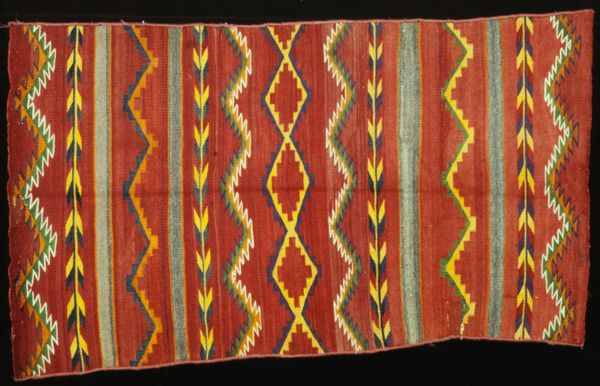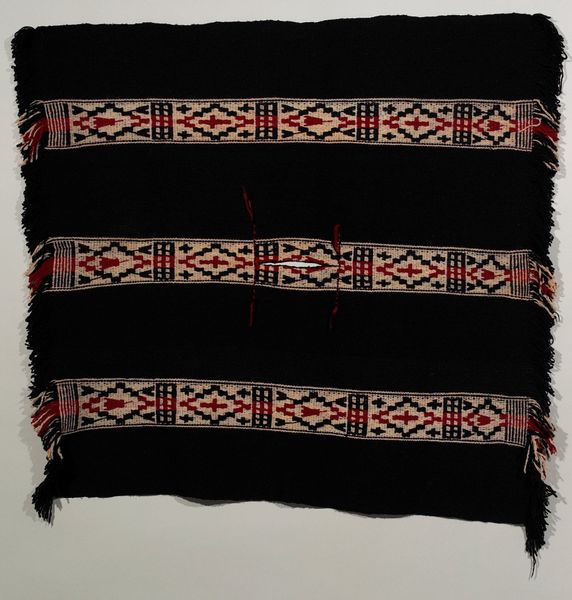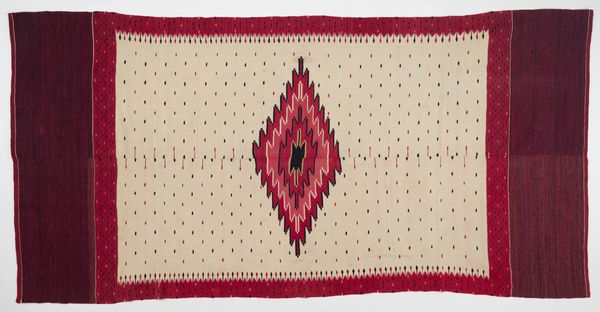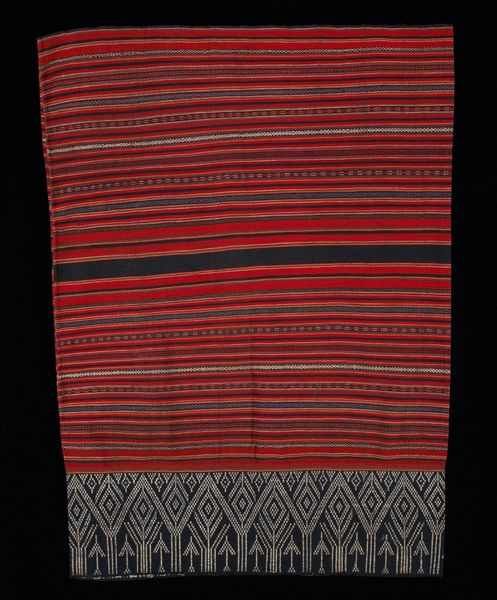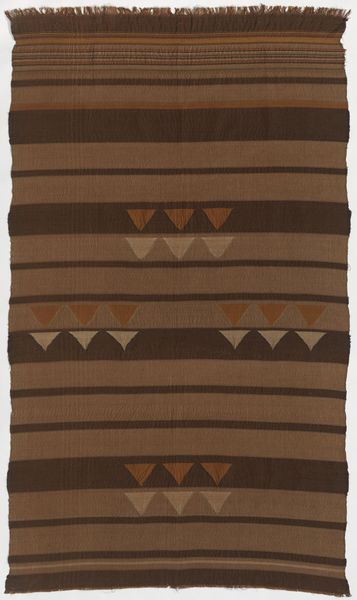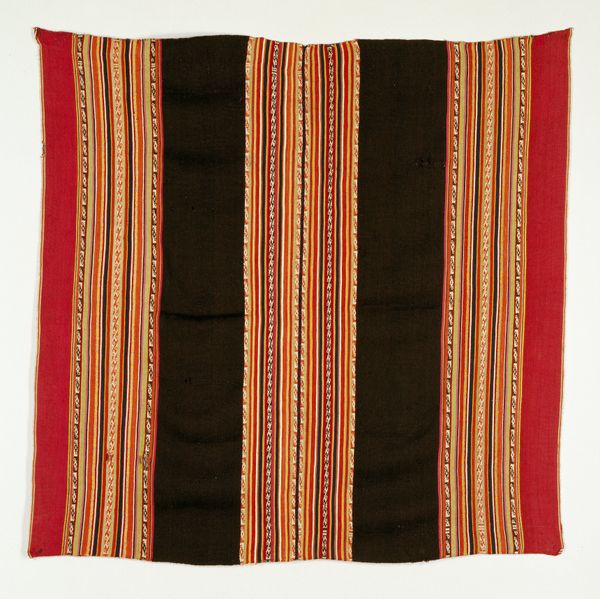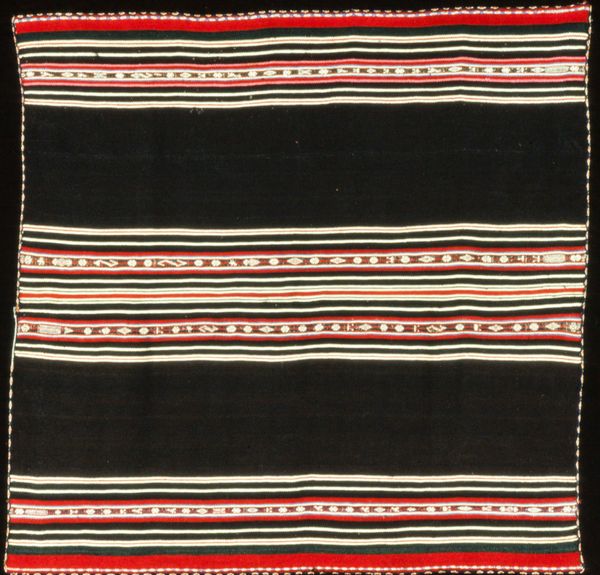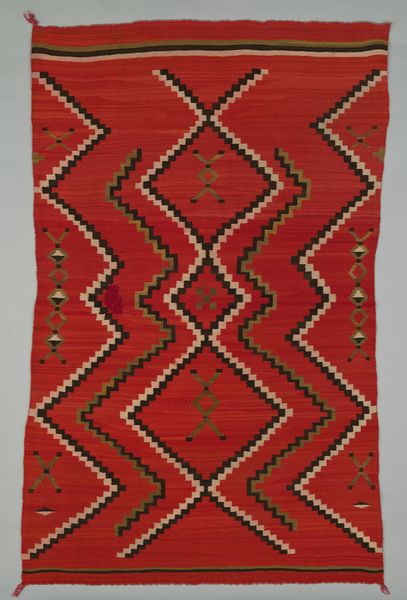
weaving, textile
#
weaving
#
textile
#
geometric
#
line
#
indigenous-americas
Dimensions: 184.2 × 153.7 cm (72 1/2 × 60 1/2 in.)
Copyright: Public Domain
Curator: Let's take a look at this stunning Navajo textile from around 1880, currently residing at the Art Institute of Chicago. It's known as a "Chief Blanket, Third Phase." Editor: My immediate impression is one of strength and calm. The stark contrast of those vertical stripes—black, white, black—is almost grounding. Yet the bursts of red add a dynamic visual energy. Curator: Absolutely. It's a fascinating interplay of horizontal and vertical elements. The strong, dark verticals are punctuated by these rectilinear designs that read almost like glyphs. Note how the central stripe echoes the framing squares. Editor: Speaking of glyphs, I wonder what these motifs meant to the Diné, the Navajo people? The crosses within the red squares… could they relate to constellations or perhaps cardinal directions? There’s a power in these ancestral symbols. Curator: Interesting idea. Now the Third Phase design signals a transitional moment. If you compare this to First Phase blankets, the early examples are striped, whereas the Second Phase incorporated bars or bands. By the Third Phase, the nine elements that you see are conventionalized, but that's where the maker could add his or her own stylistic signature. The weaver has subtly changed some motifs—one type of 'cross' versus another. Editor: That makes me think of the role blankets played within the community and as trade goods, prestigious markers of social status. What narratives are woven into the wool, reflecting on a legacy that is alive even now? Curator: Exactly. And beyond the story-telling aspect, consider the technical brilliance. The tightness of the weave, the quality of the wool—these speak to an extraordinary level of skill. You know, analyzing just these simple compositional elements gives you such an intimate access to the maker herself. Editor: Right, by understanding the process and the symbolism together, we reveal not only the artistry but the humanity embedded in this object. It transcends mere functionality, doesn't it? Curator: It does indeed. A remarkable blend of form and cultural expression. Editor: It gives you so much to ponder as you engage with this important work.
Comments
No comments
Be the first to comment and join the conversation on the ultimate creative platform.
